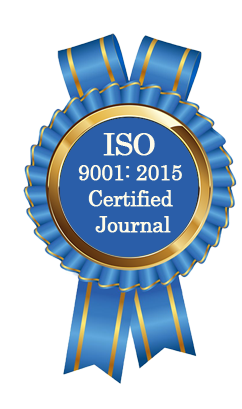| All | Since 2020 | |
| Citation | 105 | 60 |
| h-index | 4 | 4 |
| i10-index | 3 | 2 |
WJAHR Citation 
Login
News & Updation
Best Article Awards
World Journal of Advance Healthcare Research (WJAHR) is giving Best Article Award in every Issue for Best Article and Issue Certificate of Appreciation to the Authors to promote research activity of scholar.
Best Article of current issue
Download Article : Click here
Indexing
Abstract
PREDICTION OF PREECLAMPSIA USING PLACENTAL GROWTH FACTOR AS AN ADJUNCT MARKER AT (11-13) WEEK GESTATION IN A SAMPLE OF PREGNANT WOMEN IN IRAQ
*Dr. Zubaida Adnan Abdullah and Dr. Anne Khazal Yaseen
ABSTRACT
Introduction: Preeclampsia complicate ?10% of pregnancies and it a major cause of maternal and perinatal morbidity and mortality. The aim of the study to evaluate the use of placental angiogenic marker (PlGF) as early predictor of preeclampsia and its related adverse outcome. Methods: Fifty-four lady between 11th and 13th week of their gestation attending their antenatal complicated pregnancies involving Rh isoimmunization, thyroid dysfunction, connective tissue disorders, liver or kidney diseases and chronic hypertension were excluded. All women were informed about the nature of the study, and all who agreed to participate provided verbal informed consent. The study was approved by the Ethics Committee of the institution. Results: Of the enrolled and followed 54 subjects, 5 (9%) women contracted PE, including 3 delivered before 37 weeks (preterm labor). Apart from body mass index (BMI) and mean arterial pressure (MAP), other risk factors such as advance maternal age, parity, diabetes mellitus and conception method were not found to have a significant association with the occurrence of PE. Receiver operating characteristic curve (ROC) analysis showed PlGF cutoff point of 79.85pg/dl (area under the curve (AUC) = 0.798; P ? 0.029) had the maximum sensitivity and specificity of (80%) for PE prediction. 80% of patients who develop PE have low PlGF. Conclusion: Maternal serum PlGF between 11th and 13th week gestation can be used together with other maternal characteristic (MAP and BMI) as early predictor of PE and PE adverse outcome to identify fetuses requiring increased surveillance and possibly urgent delivery.
[Full Text Article] [Download Certificate]
